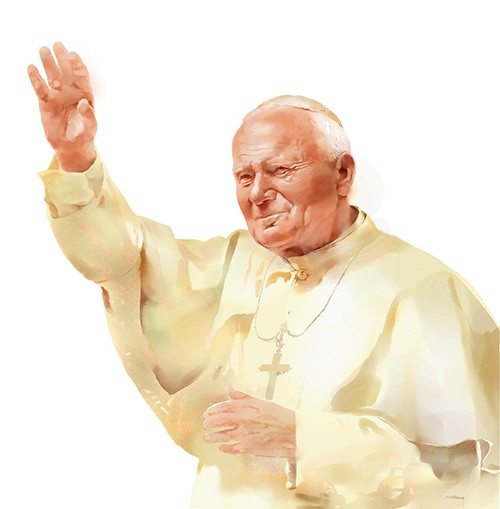VATICAN CITY — John Paul II’s beatification on Sunday will mark the penultimate stage in the process to make the late Polish-born pontiff a saint, an event seen as inappropriate by some critics, but eagerly anticipated by millions of admirers.
Indeed, Pope Benedict XVI seemed in tune with the will of the faithful when he decided in 2005 to waive the normal five-year waiting period after a candidate’s death in order to launch the beatification process.
The chant of “”Santo subito!” (Saint immediately!), which rose up from St. Peter’s Square during John Paul’s funeral, suggested that, for many, there was no doubting the holiness of the man who had led the Catholic Church for almost three decades.
Though not as instant as some would have liked, John Paul’s beatification — the fastest in modern times — comes just over six years since his death on April 2, 2005.
Earlier this year, Benedict gave the final go-ahead after church experts approved the healing of a French nun afflicted by Parkinson’s as a miracle attributable to John Paul’s intercession.
It terms of speed, it edges out, by 15 days, the 2003 beatification of Mother Teresa, the ethnic-Albanian, Macedonian-born nun who won worldwide admiration for her work in the slums of Calcutta and who died in 1997.
The archbishop of Krakow, Poland — Cardinal Stanislaw Dziwisz, who for nearly 40 years served as John Paul’s personal secretary — has stressed what he says are similarities between John Paul and Mother Teresa.
“”One day, watching on TV Mother Teresa among her poor, he (John Paul) let slip the remark that she should have been made a saint while she was still alive … but I thought that the same could have been said about him (John Paul) too,”” Dziwisz told Rome newspaper La Repubblica in a recent interview.
The two men began working together in their native, then communist-ruled, Poland before moving to Rome together following John Paul’s election as pope in 1978.
From his Vatican vantage point, Dziwisz was able to witness firsthand what has been widely regarded as John Paul’s momentous pontificate, the second longest recorded in history.
Among the highlights often cited are: John Paul’s support for the pro-democracy movement in Poland and elsewhere in Eastern Europe; and his many trips to developing countries where he sought to strengthen the church’s presence, while also drawing attention to the plight of the poor.
Many have also credited the late pontiff for promoting inter-faith dialogue, in particular seeking to improve Catholic ties with Jews and Muslims.
However, for some, such achievements need to be put into perspective against possible shortcomings in John Paul’s leadership of the more than 1.1 billion-member Catholic Church.
Recent revelations of widespread abuse of children by priests and alleged attempts of a cover-up by senior clerics have also prompted prominent church members to question the pace of John Paul’s progress towards sainthood.
The president of the U.S. National Federation of Priests’ Councils, the Rev. Richard Vega, told the online National Catholic Reporter of a need to “”look more closely into his (John Paul’s) life.””
In particular, Vega and other prominent Catholics polled by the National Catholic Reporter queried John Paul’s support of Mexican cleric Marcial Maciel, founder of the Legionaries of Christ, the secretive religious order that is the subject of a Vatican overhaul.
Maciel, who for decades was dogged by allegations of abuse, was finally removed from the ministry by Benedict in 2006. He died in 2008.
Still, potential blots on John Paul’s record appear distant from the concerns of those preparing to welcome his beatification.
Officials say Rome is ready to accommodate the around 1 million pilgrims expected to attend three days of ceremonies, including a Saturday vigil at the ancient Circus Maiximus and all-night prayer sessions in city-center churches.
Following the beatification Mass itself, which will be celebrated by Benedict, pilgrims will have a chance to file past a casket containing John Paul’s remains, which will be set in front of the main altar of St Peter’s Basilica.
The casket will be reinterred in the Chapel of St Sebastian on the main level of the basilica in a private ceremony, which will occur only after the large crowds have stopped coming to pay their respects, the Vatican reported.









